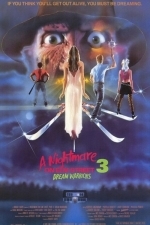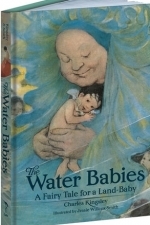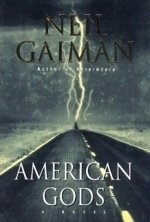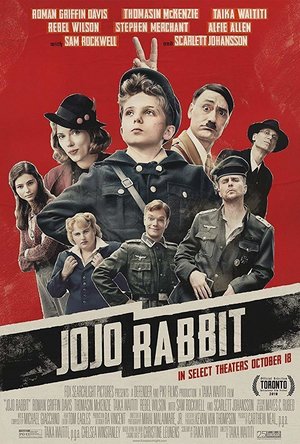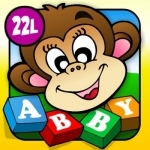
First Words 7+2 · Early Reading A to Z, TechMe Letter Recognition and Spelling (Animals, Colors, Numbers, Shapes, Fruits) - Learning Alphabet Activity Game with Letters for Kids (Toddler, Preschool, Kindergarten and 1st Grade) by Abby Monkey®
Education and Games
App
67 % OFF SALE - TODAY: August 19-31, 2017 ***** Developed by an award-winning education studio,...

Ballerina Princess Doll House - Game.s for Girls
Lifestyle and Entertainment
App
▶▶▶ It's time to design your playhome and create a dream home for your ballerina girl!...
Matthew Krueger (10051 KP) rated A Nightmare on Elm Street 3: Dream Warriors (1987) in Movies
Jul 3, 2020 (Updated Jul 3, 2020)
Lets talk more: production and deaths.
Production:
Craven's very first concept for the film was to have Freddy Krueger invade the real world: Krueger would haunt the actors filming a new Nightmare on Elm Street sequel. New Line Cinema rejected the metacinematic idea, but years later, Craven's concept was brought to the screen in Wes Craven's New Nightmare.
Before it was decided what script would be used for the film's story, both John Saxon and Robert Englund wrote their own scripts for a third Nightmare film; in Saxon's script called How the Nightmare on Elm Street All Began, which would have been a prequel story, Freddy would ultimately turn out to have been innocent, or at least set up for the murders by Charles Manson, who along with his followers would have been the main culprit of the murders; Freddy would be forced by the mob of angry parents to make a confession of the crimes, which would enrage them further. After they lynch Freddy, he comes back to avenge his wrongful death by targeting the parent's children.
In Englund's treatment called Freddy's Funhouse, the protagonist would have been Tina Gray's older sister, who would have been in college by the time Tina was murdered, and ends up coming back to Springwood to investigate how she died. In the script, Freddy had claimed the 1428 Elm Street house for his own in the dreamworld, setting up booby traps like Nancy did against him.
The death scenes: I love the death scene's in this film. Their are both memorable and excellent and probley my favorite out of all the franchise. You have Phillip's death: Veins pulled out/manipulated into falling off high ledge by Krueger, Jennifer's death: Head smashed into TV screen, Taryn death: Leg slashed with bladed glove, massive amounts of heroin injected into veins and Freddy saying "let's get high", William's death: Lifted, chest impaled with bladed glove and Freddy saying " Sorry kid, but I don't believe in fairy tales", Donald's death: Thrown/impaled through back on car's tail fin by a skeleton verison of krueger and Nancy's death: Stomach impaled twice/gutted with bladed glove/bled out, in dream world cause she sees her dad but its krueger. Also you have the Freddy worm that attacks Kristen.
The plot: During a hallucinatory incident, young Kristen Parker (Patricia Arquette) has her wrists slashed by dream-stalking monster Freddy Krueger (Robert Englund). Her mother, mistaking the wounds for a suicide attempt, sends Kristen to a psychiatric ward, where she joins a group of similarly troubled teens. One of the doctors there is Nancy Thompson (Heather Langenkamp), who had battled Freddy some years before. Nancy senses a potential in Kristen to rid the world of Freddy once and for all.
Dream Warriors: is a return to the oringal formula, and adds more. Adds memorable lines, better deaths, intoduction of comedy side of Freddy and above all a excellent movie.
The ending is sad cause Nancy and John doe die by freedy but it ends their story for now and starts a new story with Kristen, Kincaid and Joey. Its a percent, but sad ending. Ending the oringal maim charcters arc/story, while senting up a new trio of charcters.
Also you can't forget about that excellent theme song, "Dream Warrors" by Dokken.

Carcassonne
Entertainment and Games
App
a classic board game turned into an app. Tile laying game, where each turn you draw a tile and place...
BoardGameApp
Hazel (1853 KP) rated The Water Babies in Books
Oct 9, 2017
This year (2017), Calla Editions are printing a new hardback version of the original 1863 children’s classic The Water Babies written by the Anglican clergyman, Charles Kingsley (1819-75). Subtitled “A Fairytale for a land-baby” the book was intended for Kingsley’s youngest son and therefore was targeted at a juvenile demographic. However, as a result of the 1800’s vernacular and particularly deep themes, it has become more appropriate for older readers. With full-colour illustrations by Jessie Wilcox Smith (1863-1935) from the height of the golden age of illustration, this edition promises to be a collector’s item.
Charles Kingsley, the founder of England’s Christian Socialist movement, was exceedingly interested in the plight of the working class, particularly of the abuse and protection of children. This is reflected in his story about Tom, the ten-year-old London chimney sweep, who suffers ill-treatment at the hands of his employer. Tom, who has known nothing but the sooty streets of London, is embarrassed after scaring a beautiful young girl with his grimy appearance. Running away through a countryside he is unfamiliar with, Tom dives into a river to wash, however, falls asleep in the water.
On awakening, Tom discovers he has been transformed into a water baby; he can live and breathe amongst all the fishes and other mystical water creatures. Forgetting his horrible past, Tom is soon frolicking with the characters he meets, teasing and provoking unsuspecting individuals. But the fairies in charge of water babies are determined to teach him many lessons about truth, mercy, justice and courage.
The Water Babies is a morality fable with fairy-tale-like qualities. It educates young readers about the consequences of their actions but also enlightens them about the cruelty of some adults. Kingsley often talks to the reader (in this instance his son), drawing them into the story and making the scenarios as relatable as possible. The magical underwater setting is merely a veil to hide the lessons Kingsley is attempting to preach.
For the adult reader, Kingsley has a much more political message. Written at the time of political and scientific advancement, particularly in respect to the concept of natural selection, Kingsley attempts to ridicule the ideas of thinkers such as Charles Darwin by producing a satirical narrative. He suggests that scientists are fools who use unnecessarily long and foreign terms, evidenced by his use of the made-up subject of Necrobioneopalæonthydrochthonanthropopithekology. He also goes as far as to mock the majority of adults and appears to be completely anti-Irish people.
In some instances, Charles Kingsley goes too far in his satire, resulting in something that would not be accepted by publishers today. In order for Tom to be the hero of the story, adults need to be viewed as less than good – people who need to be punished for their discourteous treatment of children, which in this instance, they are, and quite graphically. But the most controversial theme explored is death. The more naïve may not cotton on to the fact that Tom falling asleep in the river equates to drowning, yet that is exactly what happened. Only through death can one become a water baby. To make matters slightly more alarming, Kingsley does not see this death as a bad thing; he describes Tom’s new life as something far better than life on earth – coming from a clergyman this is understandable – which suggests that death is better than living for an abused child.
Despite these controversies, Kingsley’s prose is humorous and entertaining - far more mind-boggling than you may initially expect. With characters named Mrs Bedonebyasyoudid and Professor Ptthmllnsprts, there is plenty to make readers laugh. Some of the hilarities may go above the heads of children since the jargon is no longer used in today’s society, however, adults will be able to appreciate the comical aspect.
Over 150 years old, The Water Babies has remained a classic. It reveals the political, scientific and social situations of the mid-1800s, yet it contains wisdom that is still relevant today. As Kingsley’s daughter Rose says in the introduction, “What a fine thing it is to love truth, mercy, justice, courage, and all things noble and of good report.” No matter how peculiar this novel is, it says a lot about the virtues of our character.
Cynthia Armistead (17 KP) rated American Gods in Books
Mar 1, 2018
I've certainly read some short stories, too. The most memorable, <a href="http://en.wikipedia.org/wiki/Snow,_Glass,_Apples">"Snow, Glass, Apples"</a> was reprinted in an anthology I read recently. I find it disturbing, so I won't re-read it. Well-written, of course—it wouldn't be so very memorably distressing if it weren't so masterfully done! (I found the <a href="http://www.holycow.com/dreaming/stories/snow-glass-apples">text online</a> if you care to read it, but please understand that the story deals with pedophilia, necrophilia, and incest here. It is the polar opposite of all things Disney.) Snow White was never one of of my favorite fairy tales, and Gaiman definitely pushed it much farther down the list.
In any case, I don't know what I was expecting from Gaiman, but <i>American Gods</i> wasn't it. I like stories with happy endings, and within the first few chapters I was fairly sure that there wouldn't be one. Is Gaiman fundamentally opposed to joy, or is it just happiness that he doesn't allow?
The novel is epic. It is masterful. All that stuff from the big critics is dead on. The book could be used as the backbone of a mythological scavenger hunt if a teacher were willing to run a very unstructured but engaging course that way. I certainly enjoyed that aspect of it, and it made me glad that I was reading it on my iTouch so that I could look up anything I liked online at any time, no matter where I happened to be (which was almost always at home or somewhere else that had wifi access, happily).
I seldom want to see illustrations in any book, but yes, I think I would like to see good pictures of some of the characters Gaiman described in this one. On the other hand, without artwork I spent time imagining what the characters looked like based on the descriptions. I don't normally stop to do that, as such matters as seldom relevant to a plot, but these beings caught my fancy. Not enough that I would sit through an entire graphic novel, I'm afraid, but if I saw one now I might flip through it to see how the artist's renderings compare with my versions.
I'm seldom able to identify an overall Theme to the books I read. Most of them, honestly, are fluff. I'm fine with that. I read them because they entertain me. <i>American Gods</i> is different. It is entertaining, but it isn't light or fluffy in the least. It definitely has an easily identifiably Theme and Tropes and all those elements that I recall from long-ago classes, the sorts of things that put me off from my original English major because I hated tearing other author's works apart instead of writing anything original. (Now, I begin to understand that we were being taught to recognize what makes for good writing so we might have some hope of possibly creating some of it one day.)
I somewhat timidly conclude that <i>American Gods</i> is the first piece of Literature I've read in a very long time, and well worth the time spent reading it. (I find it rather amusing that it would be British Literature, despite its title, due to the author's nationality.) I'm not going to state the theme, because that would be a spoiler, and I hate putting those in reviews—but it's something that I see as a Truth, and one that needs to be stated far more often, especiallly today. It's even more interesting that it took a Brit to say it.
The book is dark, although it does have some very bright spots in it. I will acknowledge that I was going through a particularly bad time with regards to my health when I was reading it, but I still think it might be best for some people to read this one when in a fairly positive state of mind.
Hazel (1853 KP) rated The Water Babies in Books
Dec 7, 2018
This year (2017), Calla Editions are printing a new hardback version of the original 1863 children’s classic <i>The Water Babies</i> written by the Anglican clergyman, Charles Kingsley (1819-75). Subtitled “<i>A Fairytale for a land-baby</i>” the book was intended for Kingsley’s youngest son and therefore was targeted at a juvenile demographic. However, as a result of the 1800’s vernacular and particularly deep themes, it has become more appropriate for older readers. With full-colour illustrations by Jessie Wilcox Smith (1863-1935) from the height of the golden age of illustration, this edition promises to be a collector’s item.
Charles Kingsley, the founder of England’s Christian Socialist movement, was exceedingly interested in the plight of the working class, particularly of the abuse and protection of children. This is reflected in his story about Tom, the ten-year-old London chimney sweep, who suffers ill-treatment at the hands of his employer. Tom, who has known nothing but the sooty streets of London, is embarrassed after scaring a beautiful young girl with his grimy appearance. Running away through a countryside he is unfamiliar with, Tom dives into a river to wash, however, falls asleep in the water.
On awakening, Tom discovers he has been transformed into a water baby; he can live and breathe amongst all the fishes and other mystical water creatures. Forgetting his horrible past, Tom is soon frolicking with the characters he meets, teasing and provoking unsuspecting individuals. But the fairies in charge of water babies are determined to teach him many lessons about truth, mercy, justice and courage.
<i>The Water Babies</i> is a morality fable with fairy-tale-like qualities. It educates young readers about the consequences of their actions but also enlightens them about the cruelty of some adults. Kingsley often talks to the reader (in this instance his son), drawing them into the story and making the scenarios as relatable as possible. The magical underwater setting is merely a veil to hide the lessons Kingsley is attempting to preach.
For the adult reader, Kingsley has a much more political message. Written at the time of political and scientific advancement, particularly in respect to the concept of natural selection, Kingsley attempts to ridicule the ideas of thinkers such as Charles Darwin by producing a satirical narrative. He suggests that scientists are fools who use unnecessarily long and foreign terms, evidenced by his use of the made-up subject of <i>Necrobioneopalæonthydrochthonanthropopithekology</i>. He also goes as far as to mock the majority of adults and appears to be completely anti-Irish people.
In some instances, Charles Kingsley goes too far in his satire, resulting in something that would not be accepted by publishers today. In order for Tom to be the hero of the story, adults need to be viewed as less than good – people who need to be punished for their discourteous treatment of children, which in this instance, they are, and quite graphically. But the most controversial theme explored is death. The more naïve may not cotton on to the fact that Tom falling asleep in the river equates to drowning, yet that is exactly what happened. Only through death can one become a water baby. To make matters slightly more alarming, Kingsley does not see this death as a bad thing; he describes Tom’s new life as something far better than life on earth – coming from a clergyman this is understandable – which suggests that death is better than living for an abused child.
Despite these controversies, Kingsley’s prose is humorous and entertaining - far more mind-boggling than you may initially expect. With characters named Mrs Bedonebyasyoudid and Professor Ptthmllnsprts, there is plenty to make readers laugh. Some of the hilarities may go above the heads of children since the jargon is no longer used in today’s society, however, adults will be able to appreciate the comical aspect.
Over 150 years old, <i>The Water Babies</i> has remained a classic. It reveals the political, scientific and social situations of the mid-1800s, yet it contains wisdom that is still relevant today. As Kingsley’s daughter Rose says in the introduction, “What a fine thing it is to love truth, mercy, justice, courage, and all things noble and of good report.” No matter how peculiar this novel is, it says a lot about the virtues of our character.
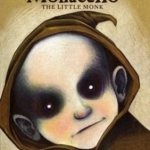
Monacello: The Little Monk: Book 1
Geraldine McCaughrean and Jana Diemberger
Book
A haunting legend from the Undercity of Naples "Goblin" "Gremlin!" "Demon!" Strange little creature....
Chris Sawin (602 KP) rated Jojo Rabbit (2019) in Movies
Oct 8, 2019
Based on the 2008 novel Caging Skies by Christine Leunens, Jojo Rabbit is a bonkers twist on one of the most devastating wars and tyrannical madmen in history. On the surface, the film is about a child attempting to become a Nazi because he views HItler as this great leader. He has to attempt to learn to kill, hate Jews, and essentially ignore all of his morals in order to just fit in with an army who believes they are the superior race. The intriguing aspect is that Waititi injects this unexpected tenderness and has concocted a film that has a heartbeat that is entirely too human and too genuine for any sort of project involving the likes of Adolf Hitler.
The Jojo/Hitler dynamic is an incredibly playful one. Hitler only seems to show up when something doesn’t go according to plan for Jojo or he needs some words of encouragement when times get tough. Hitler is a figment of Jojo’s imagination and is completely reactionary to Jojo’s world. If Jojo gets scared, Hitler shows up to remind him why he’s risking his own self comfort. While Waititi is funny and awkwardly charming as Hitler, which is an odd thing to say in itself, don’t overlook Archie Yates. Roman Griffin Davis encapsulates this innocence that even Elsa describes as something along the lines of a ten year old playing dress up with his friends in order to join a club. But Yates often plays off of Davis humorously and amusingly and will likely be forgotten about by some by the time they leave the theater.
Seemingly tapping into his inspiration for Gentlemen Broncos, Sam Rockwell portrays Captain Klenzendorf - a former war veteran who lost an eye and is now forced to teach children how to be soldiers. He has this strange tension on the verge of romance thing going on with his right hand man Finkel (Alfie Allen) and has extravagant taste with intricate ideas for his new uniform. Rockwell and Allen are hilarious and outshine Rebel Wilson’s Fräulein Rahm who never seems to serve much purpose before or after her line about, “having 18 kids for Germany.”
The sweet nature of Jojo Rabbit is expanded upon with the mother/son relationship between Rosie and Jojo. They have completely different viewpoints of a world on the verge of total annihilation where Jojo is slowly nudged into his mother’s mindset. It’s not so much a brainwashing as it is Jojo coming to terms with how he feels about people. Jojo Rabbit defines who we all are on the inside and simply explores the path anyone with an everyday beating heart (not rooted by a tiny mustache) would travel down over the course of their youth.
It’s kind of extraordinary that Jojo Rabbit has been released during a time when Fox Searchlight Pictures is owned by Walt Disney Studios Motion Pictures where a guy directing two of the biggest Thor movies did a side project where he plays Hitler and never had to attempt to keep that a secret. Waititi puts Jojo Betzler through the ringer by blowing him up repeatedly and throwing him down a flight of stairs all while being bullied and pushed around the entire time. But dammit if Jojo Rabbit isn’t one of the most heartfelt and imaginative fairy tales of the year.
This is a film where storytelling, embellishing and elongating false reputations, and glorifying urban myths is the driving force of entertainment. Underneath its layers of SS uniforms, dangerous pistols, and knives you should never leave home without, Jojo Rabbit is a touching film about human compassion with an intimacy that is absolutely unparalleled. Categorized somewhere between Wes Anderson’s Moonrise Kingdom and an imaginative concept that is an obvious homage to Calvin and Hobbes, love feels like it’s the only thing spreading across the world more powerful than war and Jojo Rabbit is more than happy to hype you up and throw you in love’s way without remorse.
Bob Mann (459 KP) rated Daddy's Home 2 (2017) in Movies
Sep 29, 2021
Here is another case in point: “Daddy’s Home 2”, which has some laugh-out-loud comedy moments, but is generally so utterly drenched in schmaltz and sentimentality that the film becomes far harder work than it should be. (By the way, I never saw “Daddy’s Home” (but read the IMDB synopsys): it was not a prerequisite for seeing this movie).
A Christmas cast. From left, Alessandra Ambrosio, Didi Costine, Mark Wahlberg, Scarlett Estevez, Will Ferrell, Owen Vaccaro, Linda Cardellini, Conor or Daphne or Dylan Wise(!) and Mel Gibson.
Will Ferrell (“Get Hard“, “Anchorman“) reprises his role as the somewhat incompetent Brad, ‘sharing’ his family of kids and stepkids with the much more streetwise Dusty (Mark Wahlberg, “Patriot’s Day“). After a poignant school recital, the pair realise the damage that a distributed Christmas is doing to their offspring and they determine to spend Christmas all together this year. In the process they vow to try to put aside their attempts at one-upmanship – “the harbour is closed” – in the interests of giving everyone the best Christmas ever.
But their plans are turned upside down when their fathers also turn up for Christmas: Mel Gibson (in a sublime piece of casting) plays Dusty’s dad, astronaut-hero Kurt, who is even more macho and extreme than Dusty, and John Lithgow (“Miss Sloane“; “The Accountant“) plays Brad’s airy-fairy father Don… the apple has not fallen far from the tree there.
Kurt forces the family to ‘fight’ Christmas on a neutral turf by renting a palatial AirBnB in a snowy wilderness. Tensions rise between the diverse individuals until a breaking point is inevitably reached.
There are some great farcical sight-gags in this movie. Quite a few of the funniest ones are spoiled by the trailer, but there are still a few standout routines that made me guffaw. A hi-tech shower is predictable but funny; and Brad’s use of a snowblower to apocalyptic ends is the funniest scene in the movie.
Wahlberg and Ferrell are a trustworthy double act (after their initial surprise pairing in “The Other Guys”). Gibson and Lithgow also inhabit their roles perfectly, although it was hard of me to relate to either of them. The scene on the airport escalator as they arrive is very well done.
The supporting cast all play their parts well: ER’s Linda Cardellini as Brad’s wife and Dusty’s ex-wife; Brazilian model and actress Alessandra Ambrosio, as Dusty’s (almost unbelievably good-looking) new wife Karen; and WWE star John Cena as Karen’s ex-husband. (Doesn’t ANYONE stay married in the US any more?). The kid stars – Didi Costine, Scarlett Estevez and Owen Vaccaro – are also good, with Estevez being particularly appealing.
Watch out for a funny cameo in the final scene as well, which I found very amusing (“You only have one story” … LoL).
“Will my bum look big in this?” – erm… no! Sara (Linda Cardellini) and Karen (Alessandra Ambrosio) on a shopping trip.
What drowns out the comedy though is the sentimental storyline around a personal tragedy being lived out by one of the family. The angst and nasty back-biting that surrounds this I found neither funny nor pleasant. The story builds to a snow-bound cinema (showing “Missile Tow” starring Liam Neeson… a great “pointless answer” for the BBC’s “Pointless” quiz!) and a finale song that is just so over the top that it has both an “awww” factor and is bile-inducing all at the same time. The screenplay is by Sean Anders and John Morris, with Anders also directing.
Will Ferrell films can be like a game of Russian Roulette, and I fully expected this to be truly awful. It wasn’t, and as a Christmas comedy it is an OK watch… and thankfully significantly above “Jingle all the Way”!
